#hieronymus of syracuse
Explore tagged Tumblr posts
Photo



The House of Hiero II of Syracuse (IV-III century BC)
check here for the Women of the House of Hiero II of Syracuse
check here for the related Epirote branch of the House of Agathocles of Syracuse (III century BC)
#history#women#historical women#historicwomendaily#greek history#hiero ii of syracuse#gelo (son of hiero II)#Demarata#heraclia#Harmonia#hieronymus of syracuse#House of Dionysius#house of agathocles#Greek Sicily#siracusa#province of siracusa#myedit#historyedit#people of sicily#women of sicily
16 notes
·
View notes
Text
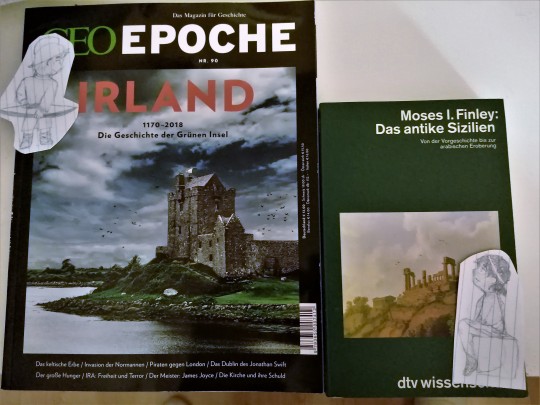
I'm here in search of your glory There's been a million before me That ultra-kind of love You never walk away from You're just the last of the real ones
I've recently put my money where my mouth is & bought books and magazines to learn more about my favourite isles on the planet. Of course I couldn't help myself & had to draw my Hetalia OCs, Ireland and Sicily, staring fondly and full of curiosity at each other throughout time and space.
Close-Ups underneath the cut!
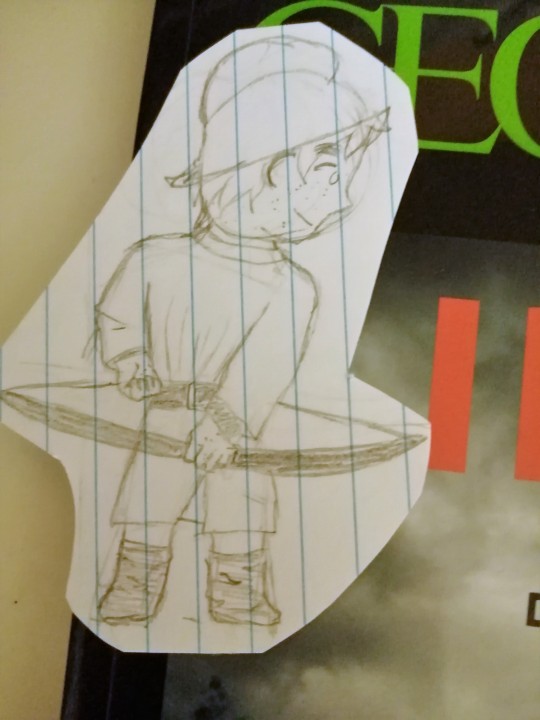

Ireland - Or Harry/Liam O'Connel - is supposed to represent a 16th century clansman & pirate! I used the illustrations from the magazine's article on Gráinne O'Malley as reference. If you don't know who Gráinne O'Malley is, go and listen to this wonderful podcast on her. She was an Irish noblewoman who made a living partially by extorting taxes out of any ships passing her part of the coast and raiding other settlements on the island. And she was a major pain in the neck of the English administration, who wanted to weed out any source of resistance against their rule!
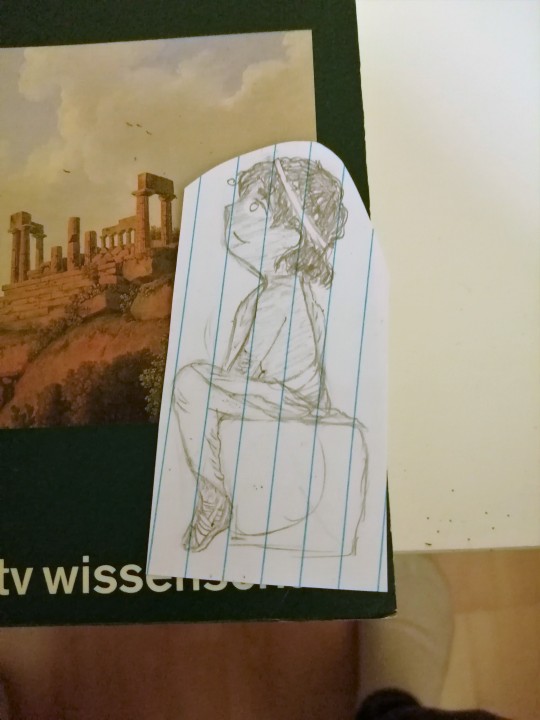
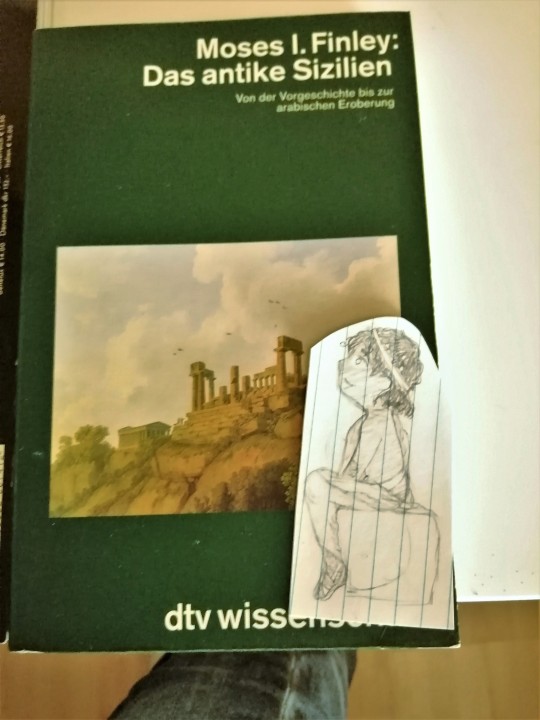
Sicily - Or Michele Vento - is clad in a Himation and wearing a hairband or crown: He's supposed to represent Hieron II, a tyrant of Syracuse who brought his city a lot of splendour and stable, politic times due to diplomatic foresight. Switching sides quickly from Carthage to Rome during the second punic war, he ensure his city one last era of prosperity before it should fall into political turmoil under his grandson Hieronymus and at last be sacked by the Romans. His appearance is both based on coins issued by Hieron II, depicting his head, and a statue of a hellenistic ruler, published in Griechische Kleidung by Margarete Bieber, first published in 1928.
#aph#hetalia#hetalia ocs#hws#hws ireland#aph ireland#hws sicily#aph sicily#historical hetalia#storie nostre#harry#miche#sicire#my art
20 notes
·
View notes
Text

Reposting this from my personal because I didn’t use the Cyberchase tag for it last year and this is important.
Some of you might know Hacker’s first name is Hieronymus (said in episode 4: Sensible Flats). It’s most likely a reference to this guy. The wiki page even sounds exactly like Hacker.

The guys is from Syracuse which was also the hometown of Archimedes who also lived during this era. And it turns out Archimedes was a relative of Hieronymus’s grandfather, Hiero II.
Why is this important? Well Archimedes is in this show too if you’ll remember.

You can even see the family resemblance! Notice the eyes, nose and hands. They even both wear bowties if that means anything.
But there’s more. If you look at crowd shots of Mount Olympus, you can see a lot of borgs who resemble Marbles.

Notice the lightbulb hats/heads. If you Google ‘Greek Marbles’ this is what comes up.
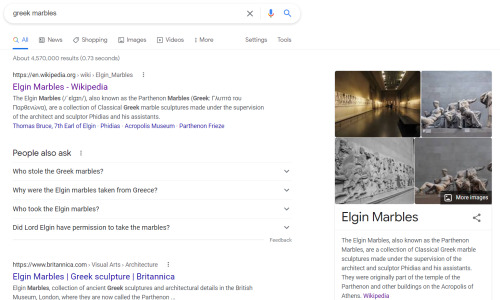
A bunch of Greek sculptures REMOVED from Greece and that are now in ENGLAND. And Marbles has a British(?) accent. His Canadian voice actor sounds like he’s attempting one anyways.

And if that doesn’t convince you that they’re connected, in the Wikipedia page, it says this:

Lord Byron is the father of Ada Lovelace who is ALSO in the show.

But this is not as deep as it goes. If you’ve ever wondered where Sleight O’Hand comes from and how a shape could be Marbles’s nephew, the answer is Archimedes. Although the show never states that the two are brothers, they do seem to have a close working relationship. However, the real tell to me is that Archimedes and Sleight are the only characters with Irish accents (that I can remember). And they’re both shapes based on triangles.
Hope this blew your mind. I’m pretty mind blown right now.
4 notes
·
View notes
Photo

Book XXIV.4. Hieronymus, King of Syracuse, put to death by his subjects {Tertiae Decadis Liber Quartus p. CXXV}, Anonymous Germany, 1493, Harvard Art Museums: Prints
Harvard Art Museums/Fogg Museum, Gift of Philip Hofer
https://www.harvardartmuseums.org/collections/object/252327
6 notes
·
View notes
Text
THIS DAY IN HISTORY DECEMBER 15. #history #thisdayinhistory…
The following excerpt was not changed from its original text to maintain literary integrity; therefore, some expressions may be archaic.DECEMBER 15. 337 B. C. Timoleon, an illustrious Corinthian, died at Syracuse. He went to the assistance of the Syracusans against the tyrant Dionysius, and became there a most benevolent and popular character. 215. B. C. Hieronymus, tyrant of Syracuse, slain.…
View On WordPress
0 notes
Text
CARLIE SHERRY : "GARDEN OF EARTHLY DELIGHTS"
"Passion is doing what you love regardless of what they fucking think of you."
Carlie Sherry graduated with her MFA in Painting at Syracuse University in 2015. Carlie actively participates in exhibitions both regionally and nationally. She is an Adjunct Professor at Pratt Munson Williams and Proctor Arts Institute and Utica College. Currently, Carlie lives in Clinton, NY where she runs her studio practice.
“GARDEN OF EARTHLY DELIGHTS”
Carlie is our Artist Feature for Fuck Art, Let’s Dance Issue #014. You can dig her work & Feature Interview @ Nostrovia! Press
N!P : What's your relationship with your body & how does this affect your work?
CS : "Tensions that exist between my religious upbringing and my sexuality have flooded my artwork in the past couple of years. Growing up in the Catholic Church was confusing on how to feel about my body, without guilt being attached to it, especially being a woman. I wanted to make a series of artwork that celebrated the woman’s body, instead of stifling it.
In my series “Garden of Earthly Delights” I celebrate sexuality, the body, and bodily functions. I place lush fruits around my body, sometimes licking, kissing the fruit. Other times the fruits appear layered suggestively over my body parts. Even though I am working with self-portraiture and celebrating parts of my own body, I hope that my series can make other women feel empowered by their own bodies as well. I should say that for this series I was greatly inspired by, Hieronymus Bosch’s painting “Garden of Earthly Delights,” where people are also indulging in earthly pleasures."
CHERRY PIE
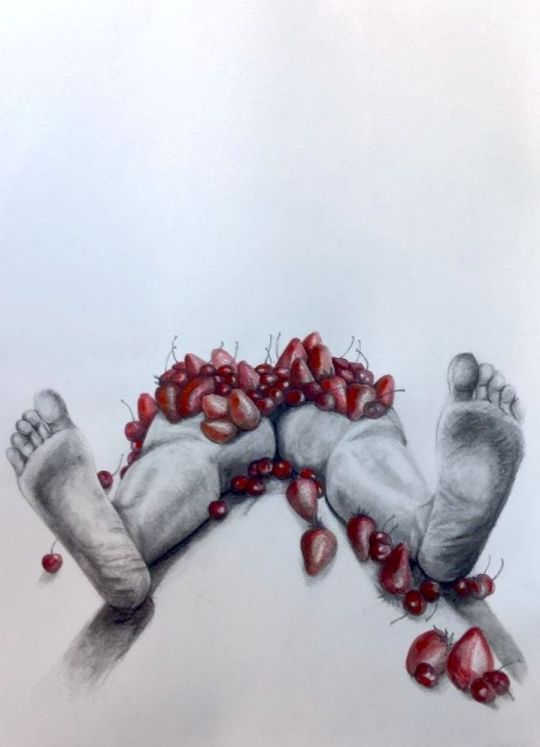
REPRODUCE

NEVER BITE YOUR TONGUE

THE KISS

2 notes
·
View notes
Text
Oriental Medicine theory 사상(四象), The Nationale Voorleesdagen, Edvard Munch, David Hockney Metmuseum, daat, Sam Van Aken Tree of 40 Fruit, Assyrian wheel, Hubble’s Cartwheel, Ox Cart, 汗牛充棟, Saving a Shipwreck, heart, Van Gogh Plate of Onions and Sunflowers
Oriental Medicine theory 사상(四象), The Nationale Voorleesdagen, Edvard Munch, David Hockney Metmuseum, daat, Sam Van Aken Tree of 40 Fruit, Assyrian wheel, Hubble’s Cartwheel, Ox Cart, 汗牛充棟, Saving a Shipwreck, heart, Van Gogh Plate of Onions and Sunflowers
Oriental Medicine theory 사상(四象) and Edvard Munch, David Hockney Metmuseum
Oriental Medicine theory: 사상(四象) four eidon Imago (imagination die Einbildungskraft, Vorstellungskraft) modes 精神氣血(정신기혈) clear spirit energy stream (daat) blood (pulse)
refer http://cafe.naver.com/chezilmaul/175
精: 1. 정하다(精--: 정성을 들여서 거칠지 아니하고 매우 곱다) 2. 깨끗하다 3. 정성스럽다 (精誠---) 4. 찧다(쌀을 곱게 쓿다) 5. 뛰어나다, 우수하다(優秀--) 6. 가장 좋다, 훌륭하다 7. 총명하다(聰明--), 똑똑하다, 영리하다(怜悧ㆍ伶俐--) 8. 세밀하다(細密--), 정밀하다(精密--), 정교하다(精巧--) 10. 정통하다, 능통하다, 능하다(能--) 11. 순수한, 정제(精製)한, 정련한 12. 몹시, 매우, 대단히 13. 정기(精氣), 정신(精神), 정력, 원기(元氣) 14. 요정(妖精), 정령(精靈), 요괴(妖怪) 15. 도깨비 16. 정액(精液)
http://hanja.naver.com/search?query=%E7%B2%BE%E7%A5%9E%E6%B0%A3%E8%A1%80精神氣血
Hieronymus #Bosch Jean-Francois #Millet Fernand #Khnopff #한의학 #OrientalMedicine #四象 #精神氣血 #spirit #神 #daat Salvador #Dali
fb.me/2V8TR12Pe
https://www.facebook.com/note.php?note_id=884593821599793
http://blog.naver.com/artnouveau19/220354623284
Mauritshuis
Today the event 'Nationale Voorleesdagen'* starts in the Netherlands. Good day to share this 'Still Life with Books and a Violin' (1628) by Jan Davidsz de Heem with you.
De Heem is known mainly for the colourful, flamboyant flower still-lifes he painted from 1650. But before that, he painted simple still-lifes in shades of brown and grey.
Educated viewers would have recognised the titles of the books on the table and understood that their central theme was the concept of fate. This added a deeper level to De Heem’s still-life. It warns against the mortality of mankind: dust thou art, and unto dust shalt thou return – however widely read you may be.
* The Nationale Voorleesdagen = a week full of book- and reading events for children.
https://www.facebook.com/mauritshuis/photos/pcb.1553509758050836/1553498338051978/?type=3&theater
Jan Davidsz. de Heem or in-full Jan Davidszoon de Heem, also called Johannes de Heem or Johannes van Antwerpen or Jan Davidsz de Hem (c. 17 April 1606 in Utrecht – before 26 April 1684 in Antwerp), was a still life painter who was active in Utrecht and Antwerp. He is a major representative of that genre in both Dutch and Flemish Baroque painting.
https://en.wikipedia.org/wiki/Jan_Davidsz._de_Heem
Edvard Munch Between The Clock And The Bed
Edvard Munch: Between the Clock and the BedAt The Met BreuerNOVEMBER 15, 2017–FEBRUARY 4, 2018
Exhibition Overview
Norwegian artist Edvard Munch (1863–1944) attained fame early in his career for his depictions of human anxiety. Throughout his career, Munch regularly revisited subjects from his earlier years, exploring them with renewed inspiration and intensity over time. Self-Portrait: Between the Clock and the Bed (1940–43) was one of his final such works and it serves as a lens to reassess Munch's oeuvre.
This exhibition features 43 of the artist's landmark compositions created over a span of six decades, including 16 self-portraits and works that have never before been seen in the United States. More than half of the works on view were part of Munch's personal collection and remained with him throughout his life.
https://www.metmuseum.org/exhibitions/listings/2017/edvard-munch
https://www.metmuseum.org/press/exhibitions/2017/edvard-munch
Edvard Munch (Norwegian, 1863–1944), Golgotha, 1900
https://en.wikipedia.org/wiki/Edvard_Munch#/media/File:Edvard_Munch_-_Golgotha_(1900).jpg
Edvard Munch (Norwegian, 1863–1944), The Scream. 1893. Oil, tempera, and pastel on cardboard. Nasjonalgalleriet, Oslo.
https://en.wikipedia.org/wiki/Edvard_Munch#/media/File:The_Scream.jpg
Edvard Munch (Norwegian, 1863–1944), Starry Night. 1893. 135.6 × 140 cm. J. Paul Getty Museum.
https://en.wikipedia.org/wiki/Edvard_Munch#/media/File:%27Starry_Night%27_by_Edvard_Munch,_1893,_Getty_Center.JPG
Edvard Munch (Norwegian, 1863–1944), The Dance of Life. 1899–1900. Oil on canvas, 49½ × 75 in. Nasjonalgalleriet, Oslo.
https://en.wikipedia.org/wiki/Edvard_Munch#/media/File:Edvard_Munch_-_The_dance_of_life_(1899-1900).jpg
Edvard Munch (Norwegian, 1863–1944), The Sun. 1910–11. 450 × 772 cm. Munch Museum, Oslo.
https://en.wikipedia.org/wiki/Edvard_Munch#/media/File:Edvard_Munch_-_The_Sun_-_Google_Art_Project.jpg
Edvard Munch (Norwegian, 1863–1944), Starry Night, 1922-1924. Munch Museum, Oslo.
http://www.christies.com/features/Munch-and-Van-Gogh-It-seemed-like-a-wild-idea-6462-1.aspx
09/05/15 — 06/09/15
Van Gogh + MunchTwo masters at the Munch Museum
http://munchmuseet.no/en/exhibitions/van-gogh-munch
Side by side, Edvard Munch and Vincent van Gogh scream the birth of expressionismVan Gogh Museum, Amsterdam
The exhibition Munch: Van Gogh shows the two artists, who never met, shared a passionate desire to paint the savage intensity of life – and it casts fresh light on the Dutchman’s tragedy
Jonathan Jones
Wed 23 Sep 2015
https://www.theguardian.com/artanddesign/2015/sep/23/munch-van-gogh-review-amsterdam-edvard-munch-vincent-van-gogh-scream-birth-of-expressionism
IMPRESSIONIST & MODERN ART
INTERVIEW
SEPTEMBER 25, 2015
Munch and Van Gogh: ‘It seemed like a wild idea’
http://www.christies.com/features/Munch-and-Van-Gogh-It-seemed-like-a-wild-idea-6462-1.aspx
Exhibition Munch : Van Gogh25 September 2015 - 17 January 2016
https://www.vangoghmuseum.nl/en/whats-on/exhibitions/past-exhibitions/munch-van-gogh
Vincent & Edvard. Two extraordinary lives - Van Gogh Museum
https://www.vangoghmuseum.nl/en/stories/vincent-edvard-two-extraordinary-lives#7
1863 — 1944
The Life of Edvard Munch
Edvard Munch was one of Modernism's most significant artists. He was active throughout more than sixty years; from the time he made his debut in the 1880s, right up to his death in 1944. Munch was part of the Symbolist movement in the 1890s, and a pioneer of expressionist art from the beginning of the 1900s onward. His tenacious experimentation within painting, graphic art, drawing, sculpture, photo and film has given him a unique position in Norwegian as well as international art history.
http://munchmuseet.no/en/munch
David Hockney, OM, CH, RA (English, born 1937), Portrait of an Artist (Pool with two figures), 1972, acrylic on canvas, 84x120 in. Art Gallery of New South Wales, Sydney, Australia.
http://www.davidhockney.co/works/paintings/70s
https://www.artgallery.nsw.gov.au/collection/works/L2014.5/
http://www.telegraph.co.uk/rewards/events/david-hockney-event/
https://www.apollo-magazine.com/david-hockney-pool-paintings/
David HockneyB. 1937
STUDY FOR PORTRAIT OF AN ARTIST (POOL WITH TWO FIGURES)
graphite, gouache, tape and paper collage on paper
13 7/8 by 18 3/4 in. 35.2 by 47.6 cm.
Executed in 1972.Sotheby’s.
http://www.sothebys.com/en/auctions/ecatalogue/2016/contemporary-art-evening-auction-n09572/lot.34.html
David HockneyDavid HockneyAt The Met Fifth AvenueNOVEMBER 27, 2017–FEBRUARY 25, 2018For nearly 60 years, David Hockney (British, born 1937) has pursued a singular career with a love for painting and its intrinsic challenges. This major retrospective—the exhibition's only North American venue—honors the artist in his 80th year by presenting his most iconic works and key moments of his career from 1960 to the present.
https://www.metmuseum.org/exhibitions/listings/2017/david-hockney
David Hockney, OM,CH, RA (English, born 1937), Garrowby Hill, 1998 - oil on canvas 60x76 in.
http://www.davidhockney.co/works/paintings/90s
Sam Van Aken Lecture: A Tree of 40 Fruit and the Hole in the Sky
Wednesday, January 24, 2018
Lecture by Sam Van Aken, Associate Professor at Syracuse University and Contemporary Artist
6:00 – 7:00 p.m. Members: Free, Not-Yet-Members: $10, Students: $5
Advance reservations recommended; space is limited. CLICK HERE TO REGISTER
Join artist and professor Sam Van Aken as he discusses the intersection of art and science in his recent work, including an actual tree that grows 40 different types of fruit and a hole he cut into the winter skies over central New York.
Sculpted through the process of grafting, the Tree of 40 Fruit blossoms in variegated tones of pink, crimson, and white, and bears a multitude of fruit. Primarily composed of native and antique varieties, the Tree of 40 Fruit is a form of conservation, preserving heirloom stone fruit varieties that are not commercially produced or available.
In November 2013, a hole was created in the clouds over Syracuse, New York producing crepuscular rays. To create this phenomenon, a twin prop plane was flown through a supercooled altocumulus cloud deck. The negative pressure created by the plane caused the supercooled water droplets to nucleate and fall, resulting in a hole in the sky.
https://rockwellmuseum.org/events/sam-van-aken-tree-40-fruit/
Israel Institute of Biblical Studies
January 18 at 8:45am
In Genesis 2, the Bible tells us that Adam and Eve ate from the fruit of "the tree of the knowledge of good and evil",וְעֵץ הַחַיִּים וְעֵץ הַדַּעַת טוֹב וָרָע. For many years, this fruit was portrayed and thought to be an apple. But in reality, the Bible does not say anything about an apple. So what did they eat in the Garden of Eden? What is the forbidden fruit? Click the image below to read more >>
The Forbidden FruitStudy Biblical Hebrew Online
https://lp.israelbiblicalstudies.com/lp_iibs_biblical_hebrew_was_it_an_apple_2018-en.html?cid=50400&adgroupid=-1&utm_source=Community&utm_medium=FB_insights&utm_campaign=BIB_EN_COM_FB_Was_it_an_apple_2018-01-17_50400
Relief met soldaten naast een koninklijke wagen (collectie: Musee du Louvre)
http://www.rmo.nl/nineveh
An Assyrian relief from the 7th century BC with soldier and Royal car, borrowed from it #MuseeLouvre. Seen in our exhibition @ttps://t.co/5hym8FiUiK
http://rmo.nl/nineveh
Assyrian relief from the 7th century BC with soldier and Royal car Musee Louvre and Oriental Medicine 사상(四象) four eidon Imago 精神氣血(정신기혈) clear spirit energy stream (daat) blood (pulse)
http://blog.naver.com/artnouveau19/221192500818
Jan. 20, 2018Hubble’s Cartwheel
This is an image of the Cartwheel Galaxy taken with the NASA/ESA (European Space Agency) Hubble Space Telescope.
The object was first spotted on wide-field images from the U.K. Schmidt telescope and then studied in detail using the Anglo-Australian Telescope.
Lying about 500 million light-years away in the constellation of Sculptor, the cartwheel shape of this galaxy is the result of a violent galactic collision. A smaller galaxy has passed right through a large disk galaxy and produced shock waves that swept up gas and dust — much like the ripples produced when a stone is dropped into a lake — and sparked regions of intense star formation (appearing blue). The outermost ring of the galaxy, which is 1.5 times the size of our Milky Way, marks the shock wave’s leading edge. This object is one of the most dramatic examples of the small class of ring galaxies.
This image is based on earlier Hubble data of the Cartwheel Galaxy that was reprocessed in 2010, bringing out more detail in the image than seen before.
https://www.nasa.gov/image-feature/goddard/2018/hubble-s-cartwheel
National Philharmonic: Cosmic Designs
In collaboration with NASA’s Goddard Space Flight Center Sponsored by Lockheed Martin
https://www.strathmore.org/events-and-tickets/np-cosmic-designs?linkId=47369289
https://www.facebook.com/photo.php?
BRAFA @BRAFA_Brussels
Jan 25
Warming up for your visit to #BRAFA 2018: #GalerieChristianDeydier returns to #Brussels with a wonderful collection of #antique Chinese #art objects. The art fair opens this Saturday 27 January and runs until 4 February. At Tour & Taxis Brussels.
https://pbs.twimg.com/media/DUZsqcHWsAEwKLY.jpg
http://www.brafa.art/gallery/Galerie-Christian-Deydier#works
소가 끄는 수레 [牛車, Ox Cart], 7-8 c, 길이 25, 높이 15 cm, 국립경주박물관 (섬서역사박물관).
http://terms.naver.com/entry.nhn?docId=1566768&cid=46716&categoryId=46716
<dt class="entryname_link" lang="zh" style="font-variant-ligatures: normal; font-variant-east-asian: normal; font-variant-position: normal; margin: 0px; padding: 0px; font-family: 새바탕, 'New Batang', 바탕, batang, 새굴림, 'New Gulim', 굴림, Gulim, 돋움, dotum, '산돌 고딕', 'Apple SD Gothic Neo', Helvetica, AppleGothic, Arial, simsun; font-size: 48px; line-height: 50px;">
汗牛充棟 한우충동
汗 땀 한, 현 이름 간
牛 소 우
充 채울 충
棟 마룻대 동
수레에 실어 운반(運搬)하면 소가 땀을 흘리게 되고, 쌓아올리면 들보에 닿을 정도(程度)의 양이라는 뜻으로,장서(藏書)가 많음을 이르는 말
유종원(柳宗元)의 육문통(陸文通) 묘표(墓表)
유래
당(唐)나라의 명문가로 알려진 유종원(柳宗元)이 같은 시대(時代)의 역사학자 육문통을 위해 쓴 묘표(墓表)에 있는 말이다. 묘표란 죽은 사람의 사적과 덕행(德行)을 기리는 문장으로 돌에 새겨 무덤 앞에 세우는 것이다. 「공자(孔子)<춘추(春秋)>의 해석을 둘러싸고 1000명의 학자(學者)가 온갖 주석을 하고 있지만, 비뚤어진 해석이나 다른 학파에 대한 비난(非難), 공격(功擊)만이 눈에 띈다. 더욱이 그런 패거리들의 저작만이 세상(世上)에 횡행하고. (其爲書 處則充棟宇 出則汗牛馬 그 저서(著書)나 장서의 엄청남이란, 소장하면 건물을 꽉 메우고, 꺼내어 운반하게 되면 수레를 끄는 마소도 그 무게에 땀을 흘릴 정도다.)라는 상태다. 한편 공자(孔子)의 본뜻에 합치한 학설(學說)은 세상(世上)에 묻힌 채로 있다.」 그��� 학문계의 당시 상황을 이렇게 말하고 한탄(恨歎ㆍ恨嘆)했다.
http://hanja.naver.com/word?query=汗牛充棟
Phila Museum of Art @philamuseum
Giovanni di Paolo drew from an eye-witness account to paint this dramatic depiction of Saint Nicholas of Tolentino saving passengers caught in a violent storm.
#OldMastersNow
http://ow.ly/Gnlq30i1tOE
Philadelphia Museum of Art
January 27 at 10:00pm
This depiction of Saint Nicholas of Tolentino saving passengers caught in a violent storm was painted eleven years after he was canonized. The artist, Giovanni di Paolo, based the image on an eye-witness account and other images of saintly maritime rescues. On view now in #OldMastersNow. http://ow.ly/nemw30i1tMB
“Saint Nicholas of Tolentino Saving a Shipwreck,” 1457, by Giovanni di Paolo http://ow.ly/nGcP30i1tNb
https://www.facebook.com/philamuseum/photos/a.78171462053.80655.44083897053/10155555525132054/?type=3&theater
Giovanni di Paolo (Giovanni di Paolo di Grazia), Italian (active Siena), first documented 1417, died 1482, Saint Nicholas of Tolentino Saving a Shipwreck, 1457, Lateral panel of an altarpiece; companion panels are in the Gemaldegalerie der Akademie der Bildenden Kunste, Vienna (inv. no. 1177), and Sant'Agostino, Montepulciano, 1457, Tempera and gold on panel with vertical grain, 20 1/2 × 16 5/8 inches (52.1 × 42.2 cm),
Philadelphia Museum of Art
http://philamuseum.org/collections/permanent/103722.html?utm_medium=social%20media&utm_source=facebook&utm_campaign=oldmastersnow&utm_content=OMN_StNicholasStorm
A PLACE YOUR GLORY DWELLS | Anabeth Morgan
https://youtu.be/wA6fqLL5b5M
Gallica
Among the many anatomical atlas available in gallica, discover today the one we owe to doctors paul broca and constantin bonamy. The many chromolithographies in the four volumes give this 1866 Atlas a striking appearance. The anatomical dissection, (almost) as if you were there…
Atlas d'anatomie descriptive du corps humain.
http://gallica.bnf.fr/ark:/12148/bpt6k6291560g
Vincent van Gogh, Starry Night over Rohne, 1888. Musee d’Orsay.
https://www.vangoghmuseum.nl/en/whats-on/exhibitions/past-exhibitions/munch-van-gogh
http://www.christies.com/features/Munch-and-Van-Gogh-It-seemed-like-a-wild-idea-6462-1.aspx
Van Gogh, Still life with a Plate of Onions, early January 1889. Oil on canvas, 50 x 64 cm. Kroller-Muller Museum, Otterlo.
Upon his release from the hospital on January 7, 1889 (following his first mental breakdown in December), Vincent resolved to adopt a healthier lifestyle. In this, one of the first canvases he completed upon his return to the Yellow House, Vincent depicts F. V. Raspail's "Manuelle annuaire de la sante" (Health Annual), a popular manual of first aid, hygiene, and home remedies. The adjacent plate of sprouting onions and pot of camphor oil represent two of Raspail's many recommendations for good health.
https://www.facebook.com/vangoghthelife/photos/a.194601230605694.50200.146441978754953/1739714459427689/?type=3&theater
Van Gogh, Sunflowers, January 1889. Oil on canvas, 92.4 x 71.1 cm. Philadelphia Museum of Art, Philadelphia.
https://www.facebook.com/vangoghthelife/photos/a.194601230605694.50200.146441978754953/1723304534402015/?type=3&theater
0 notes
Photo
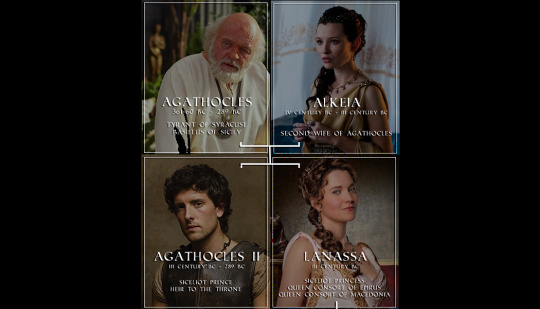
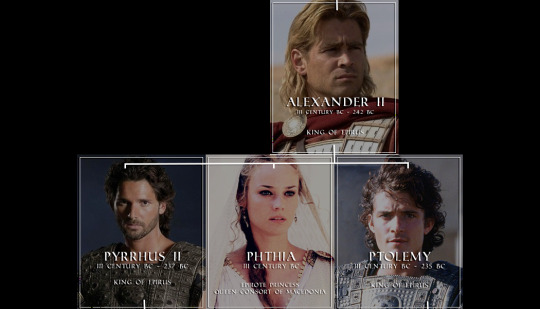
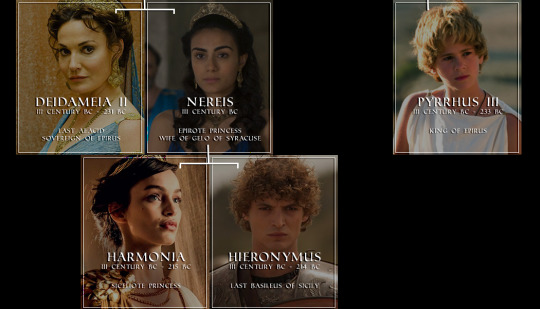
The Epirote descendants of Agathocles of Syracuse and his second wife Alkeia
AGATHOCLES II or AGATHOCLES Junior (Ἀγαθοκλῆς), son Agathocles by his second wife Alkeia. Nothing is known about his life up to the moment his father sent him to Macedonia, at the court of Demetrius I Poliorcetes. This voyage had been organised with the intent to present the younger Agathocles as his father's heir and to form an alliance with Macedonia. Indeed Demetrius received him with all the honours, dressed him in regal robes and gave him splendid gifts. Back in Syracuse the old tyrant officially introduced his son as his successor in front of the people. The younger Agathocles was then sent to the Syracusan encampment, at that time stationed near Etna. Up to that time, the army had been led by Arcagathus, son in turn of the late Arcagathus (not to be confused with the Egyptian one), firstborn of the tyrant. As soon as Arcagathus received his grandfather's order to hand over the army's command to the younger Agathocles, he devised a plan to kill both his grandfather and half-uncle and seize the power. As he instructed his collaborator Menon to poison the tyrant, Arcagathus invited his uncle and, after having got him drunk, murdered him. Agathocles' body was thrown into the sea and, after some time, the tide washed him ashore, where he was recognised and brought to his dying father. Indeed the poison didn't kill immediately the older Agathocles. As soon as the tyrant found out what had happened, he disinherited his grandson and proclaimed as his successor the people of Syracuse, thus abolishing the monarchy and re-established the democracy.
LANASSA (Λάνασσα) see
ALEXANDER II (Αλέξανδρος), son of Pyrrhus I and Lanassa, daughter of the tyrant Agathocles. Alexander succeeded his father as the King of Epirus in 272 BC. He managed to drive Antigonus II Gonatas out of Macedonia, thus finishing his late father's job, but was in turn driven out of his country by Antigonus' son, Demetrius II. Alexander then took refuge among the Acarnians and, with their help and that of his subjects still loyal to him, he recovered Epirus. He married his half-sister Olympias II (daughter of Pyrrhus' first wife, Antigone), who bore him three children: Pyrrhus, Phthia and Ptolemy. Alexander died in 242 BC and was succeeded by his son Phyrrus, although Olympias briefly assumed the regency on account of her sons' young age. She ruled over Macedonia until Pyrrhus reached adulthood.
PYRRHUS II (Πύρρος), son of Alexander II and Olympias II. He succeeded his father when he died in 242 BC, although he effectively started to rule when he reached adulthood. He fathered two daughters (Deidameia and Nereis) with an unnamed woman. Pyrrhus died in 237 BC and was succeeded by his brother Ptolemy.
PHTHIA (Φθια), daughter of Alexander II and Olympias II. Following her father's death, and before 239 BC, Phthia was married by her mother the Regent to Demetrius II of Macedonia. Olympias intended to build up an alliance with Macedonia to contrast the Aetolian League. Nothing else is known about her.
PTOLEMY (Πτολεμαῖος), son of Alexander II and Olympias II. He was called after his late uncle, his mother's full-brother, who probably died in childbirth. Ptolemy succeeded his brother Pyrrhus, but died in 235 BC, after having ruled for three years. He was in the middle of a military expedition when he fell sick and died (although, according to Polyaenus, he was murdered). It is said his mother died soon after of heartbreak since she couldn't bear to lose his sons in such a short period of time. Ptolemy was succeeded by his son, Pyrrhus.
PYRRHUS III (Πύρρος), son of Ptolemy and an unnamed woman. He was only a child when he became King of Epirus, after his father's sudden death. Two years later, Pyrrhus was killed in a coup that had the intent to abolish the monarchy and institute the republic. He was succeeded by his cousin Deidameia.
DEIDAMEIA II or DEIDAMIA (Δηιδάμεια), daughter of Pyrrhus II and an unnamed woman. She succeeded her cousin Pyrrhus III as sovereign of Epirus. Unfortunately for Deidamia, she found herself in the middle of the revolution. She fled to Ambracia and, when offered clemency if she surrendered, she capitulated. She sought refuge in the temple of Artemis as soon as it was clear the Epirotes wouldn't find peace until they were sure they had wiped out the entire royal family. Heedless of the sacrality of the place, the mob killed Deidamia in the sanctuary itself. She was the last Aeacid sovereign of Epirus. After her death, the republic was instituted.
NEREIS (Νηρηΐς) see
HARMONIA (Ἁρμονία) see
HIERONYMUS (῾Ιερώνυμος), son of Gelo of Syracuse and Nereis, daughter of Pyrrhus III of Epirus. Hieronymus was born in Syracuse in 231 BC. After Gelo died in 216 BC, his father, the tyrant Hiero II, named his grandson as his heir. Fearing for Syracuse' fate, Hiero had entrusted his grandson's preparation to numerous tutors, hoping they would correct his weak and (apparently) depraved character. To guide the youngster, at least at the beginning of his rulership, the tyrant had created a council of 15 trusted men, which counted his sons-in-law, Adranodoros and Zoippus. Hiero died in 215 BC and, as he had arranged, he was succeeded by the 15-years old Hieronymus. Polybius describes the new tyrant as “unstable and feather-brained” and, according to the historian, he shocked everyone by marrying a prostitute and giving her the title of queen. The immature tyrant found himself in the middle of the internal strife between the pro-Carthaginian faction and the pro-Roman faction. The former one was represented mainly by Andranodorus and Zoippus, who managed to weaken their enemies and easily manipulated their nephew-in-law. An alliance was agreed between Syracuse and Carthage, represented by Hannibal. According to this treaty, the island of Sicily was going to be ideally divided by the river Himera into two areas. The western part would belong to Carthage, the eastern part to Syracuse. Soon after Hieronymus asked for the western part too and, fearing to lose such an important ally, the Carthaginian caved in. In return, the tyrant had to raise an army and conquer all those Sicilian cities which still hadn't been conquered by either Carthage or Syracuse and were under Rome’s influence. Hieronymus quickly obliged and prepared to Leontinoi, where the pro-Roman faction was dominant. These people feigned to peacefully welcoming him, but while Hieronymus was walking through the city's streets, a group of conspirators attacked him and stabbed him to death. It was 214 BC and Hieronymus had ruled for merely 13 months. He was the last basileus of Sicily. Syracuse will be conquered by Rome in 212 BC.
see here the Egyptian descendants of Agathocles
see here the Syracusan descendants of Agathocles
#history#women#women in history#Agathocles of Syracuse#house of agathocles#agathocles ii#lanassa of syracuse#alexander ii of epirus#pyrrhus ii of epirus#ptolemy of epirus#phthia of epirus#pyrrhus iii of epirus#deidameia ii of epirus#nereis of epirus#Harmonia#hieronymus of syracuse#hiero ii of syracuse#people of sicily#women of sicily#myedit#historyedit#house of hiero ii
33 notes
·
View notes
Photo
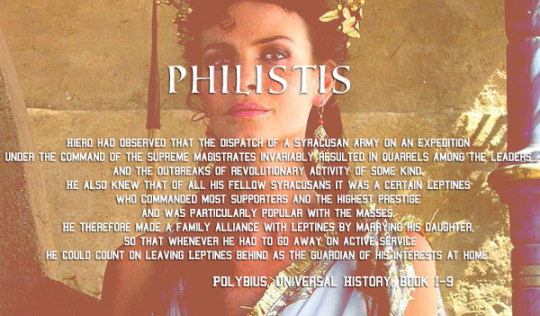
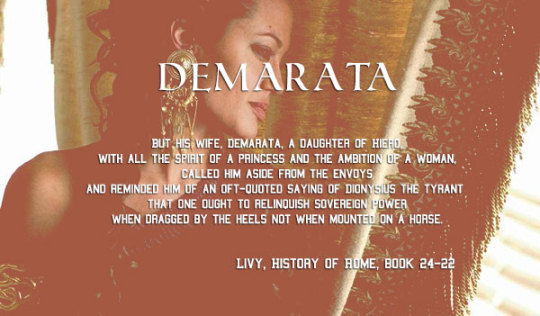
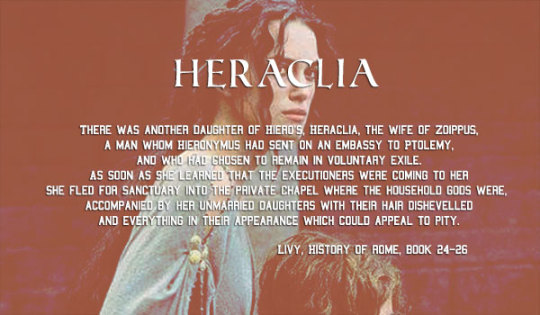
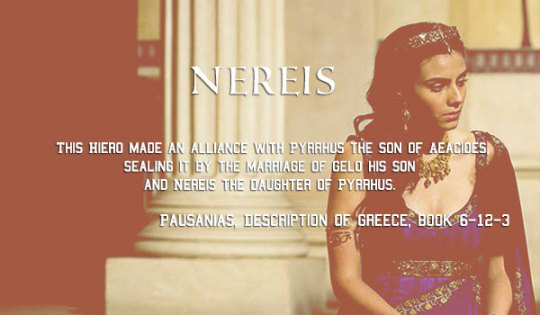
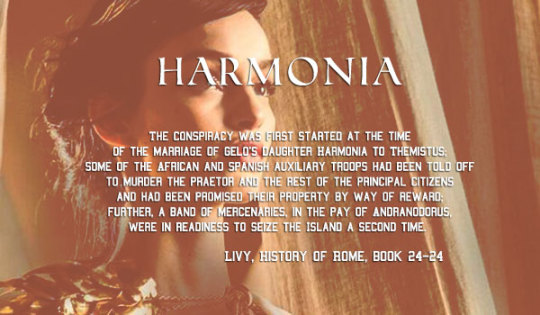
"For what," he [the praetor Sopater] asked, "could a boy like Hieronymus, who was hardly in his teens, have done on his own initiative? His guardians and masters reigned unmolested because the odium fell on another; they ought to have perished before Hieronymus or at all events when he did. [...] But it was really the wives who were responsible and who, being of royal blood, had filled their husbands with a passion for royalty, for one of the men had married Hiero's daughter, the other a daughter of Gelo." At these words shouts rose from the whole assembly declaring that neither of these women ought to live, and that no single member of the royal family ought to survive.
Livy, History of Rome, book 24-24
The Women of the House of Hiero II of Syracuse (3rd century BC)
Philistis was the daughter of an influential Syracusan citizen, Leptines. Through her father, she descended from Siceliot historian Philistus. Around 275 BC Philistis married Hiero, who will become tyrant of Syracuse in 270 BC. This man was the illegitimate son of a Syracusan nobleman, Hierocles. Hiero served under Pyrrhus I of Epirus during the Sicilian campaign, and after the King of Epirus left the Island, Hiero was appointed arcontes together with another man, Artemidorus. While the latter, at some point, simply disappeared from the chronicles, Hiero managed to establish a personal rule resembling the contemporary Hellenistic reigns. Philistis would give birth to three children: Gelo, Demarata and Heraclia. Nothing more is known about her life or death, although she’s portrayed in various coins minted during the reign of her husband. In these coins Philistis appears veiled and with idealized traits, resembling the type of Demeter, but also in the style of the coins of the Ptolemaic queens of Egypt.
Demarata was daughter of Hiero II and Philistis. Her name was chosen to honor late queen Demarete of Syracuse and in an attempt to link Hiero’s dinasty to previous tyrant Gelon’s, from whom Hiero declared to descend. Demarata married Adranodoros, one of Hieronymus’ fifteen guardians and part of the pro-Carthaginian faction. Hieronymus was Hiero’s grandson and heir as well as Demarata’s nephew and became Syracuse’s tyrant after his grandfather’s death in 215 BC. Taking advantage of his nephew’s young age (he was 15 at that time), Adranodoros concluded an alliance between Syracuse and Carthage, thus betraying Rome. Moreover he dismissed the other guardians and became Hieronymus’ sole ward with the title of chief counsellor. Hieronymus was killed (stabbed to death) in 214 BC in Leontini by a band of conspirators led by the Syracusan Deinomenes. He had ruled for just 13 months. At first, Adranodoros attempted to seize the power and become the new tyrant. When he understood it was too difficult and risky, he surrendered the power to the Syracusan people and was appointed general. But soon the people became wary of Adranodoros, especially after Ariston, a comedian and friend of the general, declared that Adranodoros and Themistos (brother-in-law of the late Hieronymus) were plotting to massacre the other influential citizens to establish their personal tiranny. Syracusan senate then gave order to eliminate the threat and so Adronodoros and Themistus were killed as soon as they entered the Senate building in 214 BC. Not satisfied with just those two murders and with the intent to justify his decision, the other general Sopater (member of the pro-Roman faction) accused the two men’s wives. In particular, Demarata was depicted as ambitious and power-hungry. She was accused of being the real mastermind behind the idea to remove Hieronymus’ other guardians, as a matter of fact starting Adranodoros’ scramble for power. Demarata’s supposed (or not) aspiration to become Syracuse’s queen was shattered the moment she was killed by the angry mob incited by Sopater’s accusations.
Heraclia was daughter of Hiero II and Philistis, as well as sister of Demarata and Gelo. She married Zoippus, who together with Adranoros was one of his nephew Hieronymus’ guardians. Like his brother-in-law, Zoippus was part of the pro-Carthaginian faction and worked to distance Syracuse from Rome. He was sent to a diplomatic mission to Ptolemy (most certainly Ptolemy IV Philopator). When in 214 BC Zoippus was reached by the news of Hieronymus’ death, he decided to remain in Alexandria in a self-imposed exile and so he survived his family’s massacre. His wife, Heraclia, and his two unnamed daughters weren’t equally lucky. No importance was given to the fact they were extraneous of plots and political schemes, what mattered was they were members of the royal family. They seeked refuge in a temple, hoping the mob would have respected the sacrality of the place. Heraclia implored the crowd to at least spare the girls, who were so young and innocent and just kill her. She was dragged outside the temple and killed before her daughters’ eyes with her blood splattering them. The girls, at first, managed to resist, but in the end they fell lifeless to the ground with their bodies full of wounds and whole place was covered in their blood. Soon after a messenger arrived with the order they were not to be killed, but it was already too late.
Nereis was an Epirote princess and the daughter of Pyrrhus II of Epirus and an unnamed woman. Her sister Deidameia was the last Aeacid sovereign of Epirus. Nereis descended from both Pyrrhus I of Epirus (her great-grandfather) and the Syracusan tyrant Agathocles (her great-great-grandfather). Her marriage to Gelo, Hiero’s son, was part of her father-in-law’s policy to strenghten and validate his dynasty. A similar alliance had been established in the past, and Nereis was the result of it. The marriage pact was concluded just before the fall of the Aeacid dynasty. The princess bore at least two children to Gelo, a girl and a boy: Harmonia and Hieronymus. Nothing is known about her fate, but it’s implied she survived her sister, making Nereis the last surviving Aeacid royal member.
Harmonia was the only daughter of Gelo of Syracuse and Nereis of Epirus. This made her the granddaughter and then the sister of the last two Syracusan tyrants. She married Themistos, member of the pro-Carthaginian faction and possibly one of the 15 guardians of Hieronymus. Themistos was accused together with Adranodoros to aspire to a personal tyranny following the murder of his brother-in-law and then killed. Like her aunt Demarata, Harmonia was considered a schemer and a puppetmaster of both her husband and young brother. After the murders of her aunts and cousins, it was only a matter of time Harmonia would have followed them. Her nurse then found a girl of the same age and resembling her protegée. The girl accepted to pass off the princess and was dressed in royal attire by the nurse, then she proceded to draw all the attention to her. In the meantime, Harmonia went hiding, but seeing the murderous crowd killing the innocent girl was too much for the princess. Tradition says she killed herself, although according to Valerius Maximus she revealed herself in front of the killers, claiming to be the real Harmonia, and was instantly murdered.
#women#history#women history#historical women#sicily#Philistis#Demarata#Heraclia#Nereis#Harmonia#hiero ii of syracuse#hieronymus of syracuse#greek sicily#people of sicily#women of sicily#siracusa#province of siracusa#historyedit#myedit
65 notes
·
View notes